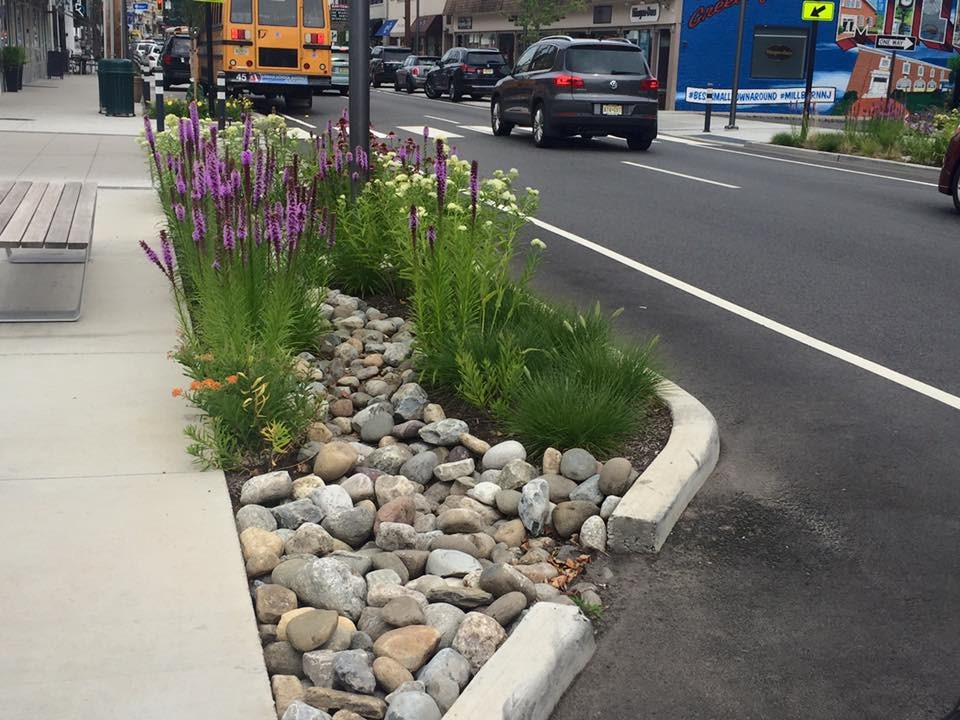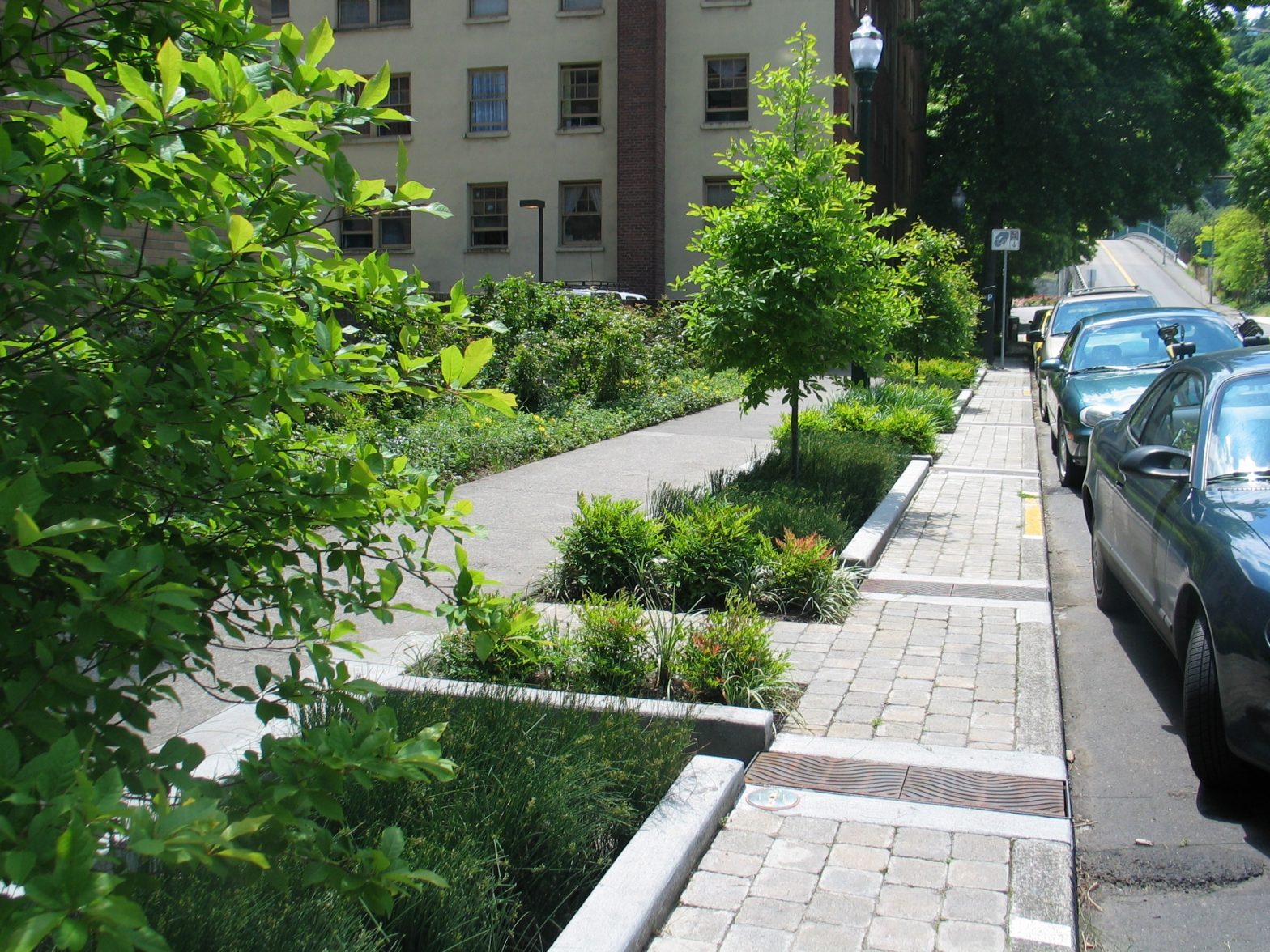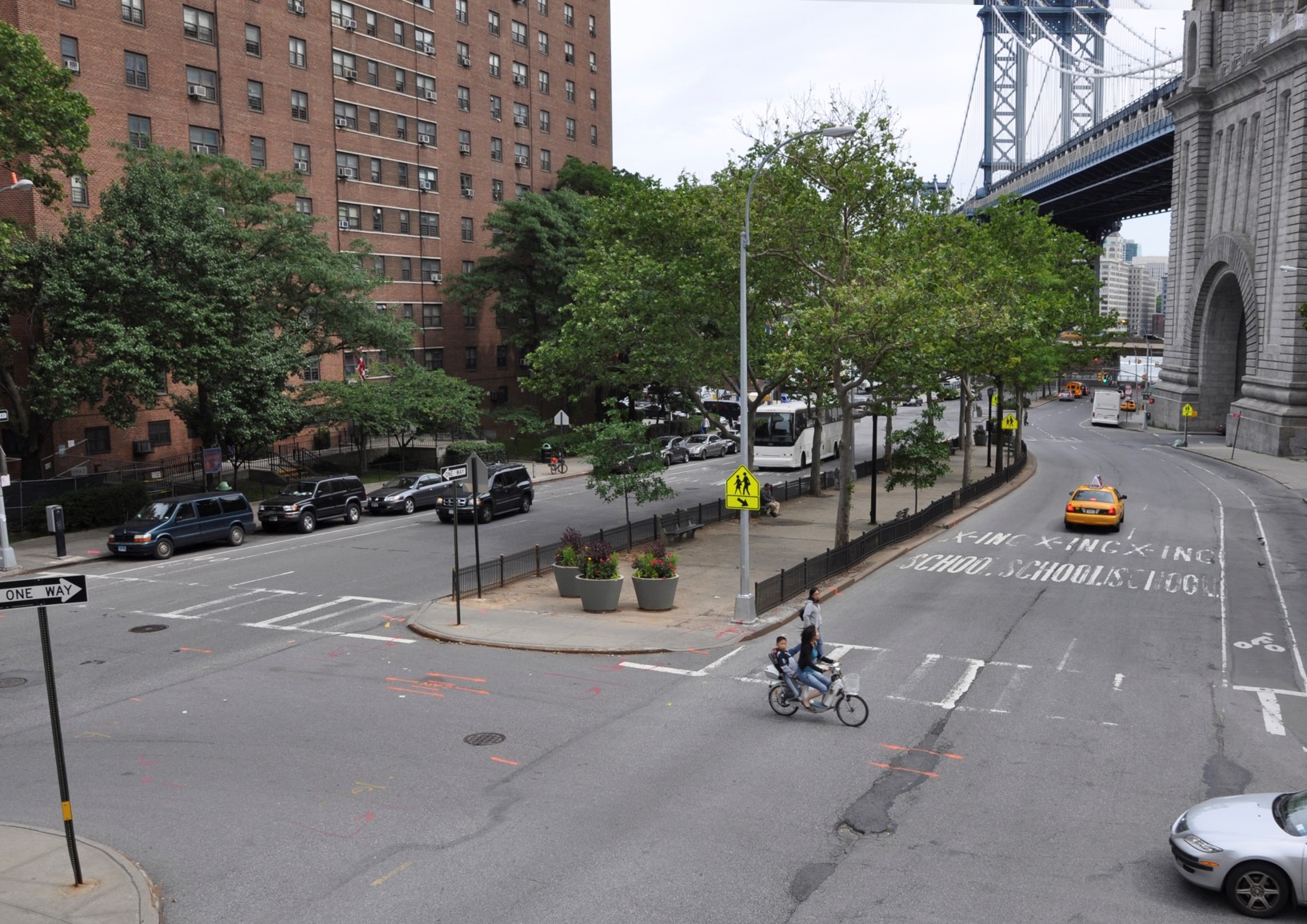Many streets act as barriers. Cars speed through multiple lanes, endangering pedestrians and bicyclists. Wide expanses of asphalt — often with inadequate sidewalks — mar downtowns and discourage foot traffic. Paved roads prevent rainwater from soaking into the ground, resulting in stormwater runoff that pollutes waterways.
But we can design our landscape differently. Streets can act as all-purpose corridors — not just for cars, but also for people, public transit, and green stormwater management. Known as “complete and green streets,” this design ideal has achieved greater recognition with a new resource from the New Jersey Department of Transportation (NJDOT). NJDOT’s model complete and green streets policy and guide provides practical guidance for municipalities, counties, and agencies to improve roads and the overall landscape.
|
|
|
|
Complete streets are designed with the safety, mobility, and accessibility of all users in mind. That includes children, older adults, pedestrians, bicyclists, persons with disabilities, public transit passengers, and drivers. This differs significantly from earlier road design, which prioritized cars alone.

Diagram of a complete street. Photo credit: AARP
Complete and green streets represent a further step in the evolution of more beneficial roads. These streets incorporate green infrastructure like tree trenches and curb bump-outs to manage stormwater, reducing stormwater runoff and creating an attractive landscape.
More than 100 of New Jersey’s 565 municipalities have adopted complete streets policies, demonstrating widespread interest in this new design paradigm. However, many of these policies have not resulted in the actual creation of complete and green streets, as they sometimes lack mechanisms for implementation.
| Municipalities throughout New Jersey have created green streets. View examples here. Are there others we left out? Email Julia McBride with your green street projects! |
NJDOT’s model policy and guide will change that. It provides guidance for all roadway jurisdictions to create complete and green streets according to current best practices. It makes the connection between complete streets and health, economic development, equity, and green streets. It also contains sample language for communities to amend existing complete street policies or adopt new ones.
Members of the Green Streets Subcommittee, a working group of the Jersey Water Works Green Infrastructure Committee, generously gave of their time to review early interactions of the policy and guide, particularly by weighing in on the green streets sections.
“New Jersey has more individual complete street policies than any other state, but there are opportunities to increase the effectiveness of these policies so they actually create safer streets for all users and do not simply sit on a shelf,” said Kandyce Perry, planning and policy manager at New Jersey Future, who participated in a collaborative effort to help NJDOT develop the new model policy and coordinated reviews with the Jersey Water Works Green Infrastructure Committee. “In addition to green streets, the new model policy provides a mechanism for tracking where and how investments are spent so that complete streets are delivered equitably to neighborhoods and users with the most need. The new guidance also recommends that jurisdictions create an advisory body to ensure the model policy’s best practices are at the forefront of all decisions. I’m very thankful to the Department and their leadership in making this model policy a priority, and to the many partners I had the pleasure of working with to help draft the document.”
A working group composed of nonprofits, advocates, and government organizations spent two years assembling information and recommendations that shaped the policy. View the full list below.

Green infrastructure captures stormwater and allows it to filter into the ground, reducing flooding and pollution. It differs from “gray” infrastructure, the traditional system of routing stormwater into drains and pipes that empty into waterways. Green infrastructure can take many different forms, such as rain gardens, permeable pavements, and curb bump-outs. This curb bump-out captures rainwater and slows traffic, serving both as stormwater management and a pedestrian safety feature. Photo taken by Jennifer Duckworth, Millburn Environmental Commission.
“As Mayor of Scotch Plains, it is a priority of mine to establish policies, like complete streets, that support the overall health of our residents,” said Al Smith. “Our complete streets policy promotes healthy lifestyles, increased social connectivity, and a sense of community belonging, which are all instrumental in supporting the mental and physical well-being of our residents. As our downtown residential and business community grow, it is important that the design of our streets, walkways, and bike paths incorporate these Complete Street principles. I recommend all mayors adopt the most current Complete Streets policies to improve and strengthen the connectivity of their communities.”
Effective street design can prevent flooding, reduce the urban heat island effect, raise the value of homes and businesses, increase foot traffic, and make people safer. Besides environmental dividends, well-designed streets result in social benefits. NJDOT’s model policy prioritizes health, equity, and economic development — important facets of completing a street. With numerous benefits, complete and green streets represent a significant step toward creating more sustainable landscapes.
Members of the New Jersey Complete Streets Working Group
Policy & Guide Team
AARP-NJ – India Hayes Larrier and Brian McGuire
American Heart Association – NJ Chapter – Courtney Nelson
Greater Mercer TMA – Jerry Foster
Bicycle Coalition of Greater Philadelphia – John Boyle
New Jersey Future and Jersey Water Works – Kandyce Perry
RideWise TMA, Inc. – Linda Rapacki
Sustainable Jersey – Anne Heasly and Linda Weber
Tri-State Transportation Campaign – Janna Chernetz and Sonia Azczesna
Voorhees Transportation Center, Rutgers University – Leigh Ann Von Hagen
Members and Participants
Agricultural Experiment Station Cooperative Extension, Water Resources Program, Rutgers University – Christopher Obropta, Ph.D.
Cross County Connection TMA – Jason Simmons
NJ Conservation Foundation – Julia Raskin and Olivia Glenn
NJ Department of Community Affairs – Jef Buehler
NJ Department of Transportation – Elise Bremer-Nei
NJ Bike and Walk Coalition – Cyndi Steiner
NJ Healthy Community Network – Janet Heroux
Passaic County – Mike Lysicatos
Rails-to-Trails Conservancy – Elizabeth Sewell
West Windsor Council – Allison Miller
For more information about green infrastructure, view New Jersey Future’s Green Infrastructure Municipal Toolkit and Developers’ Green Infrastructure Guide.



